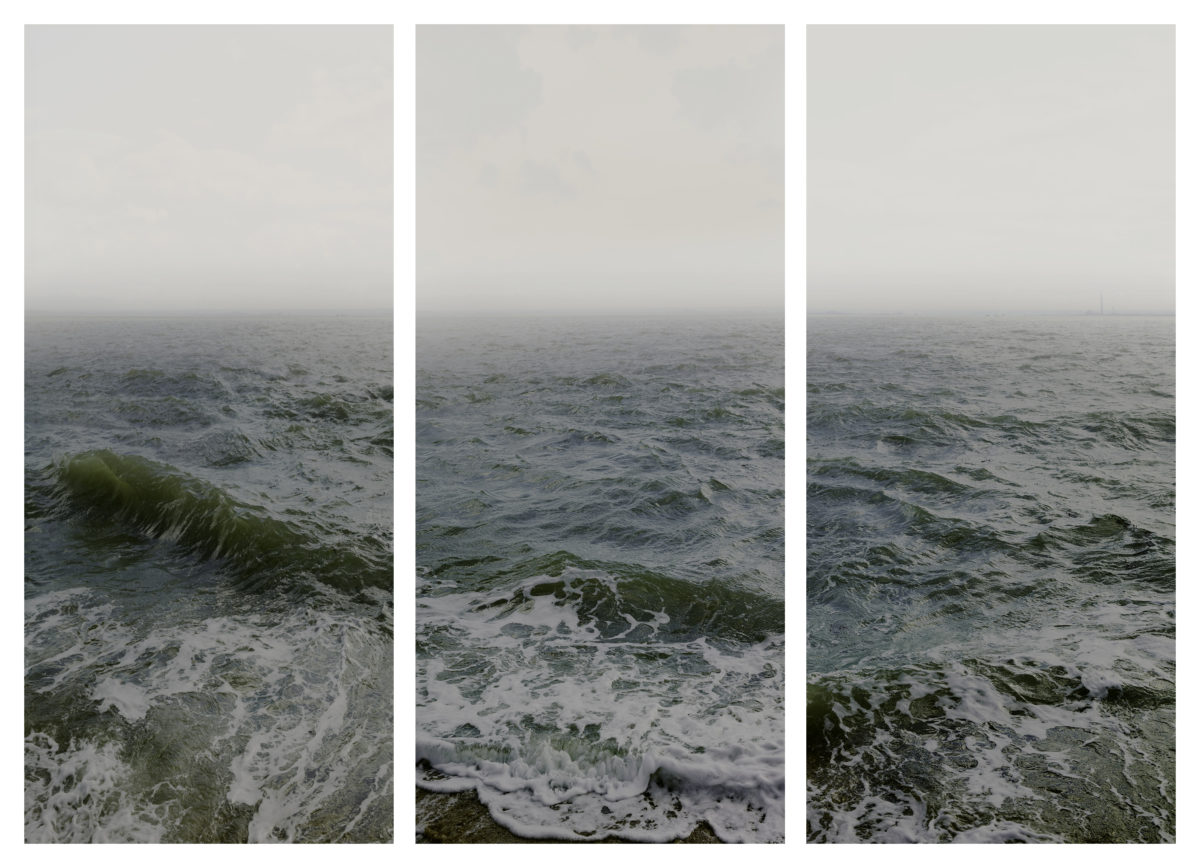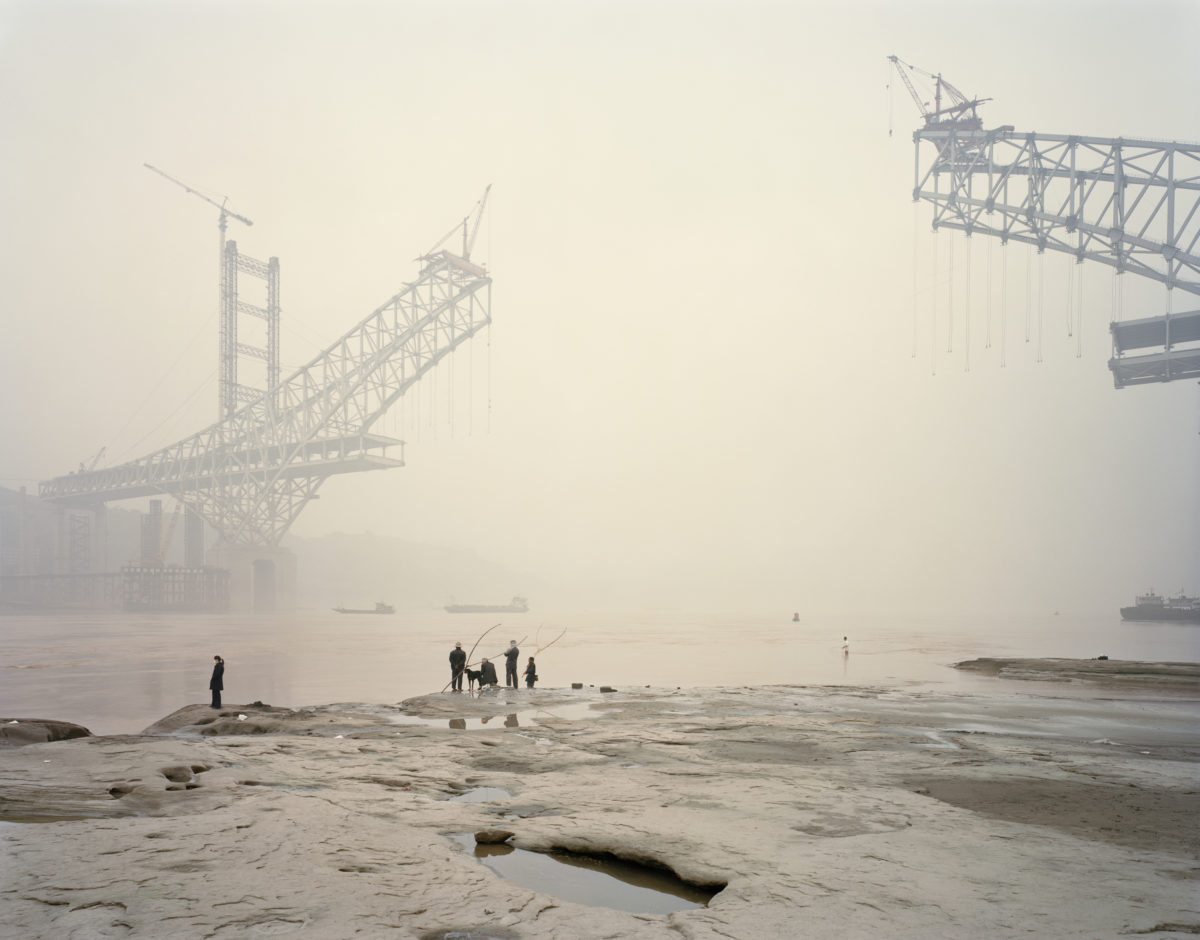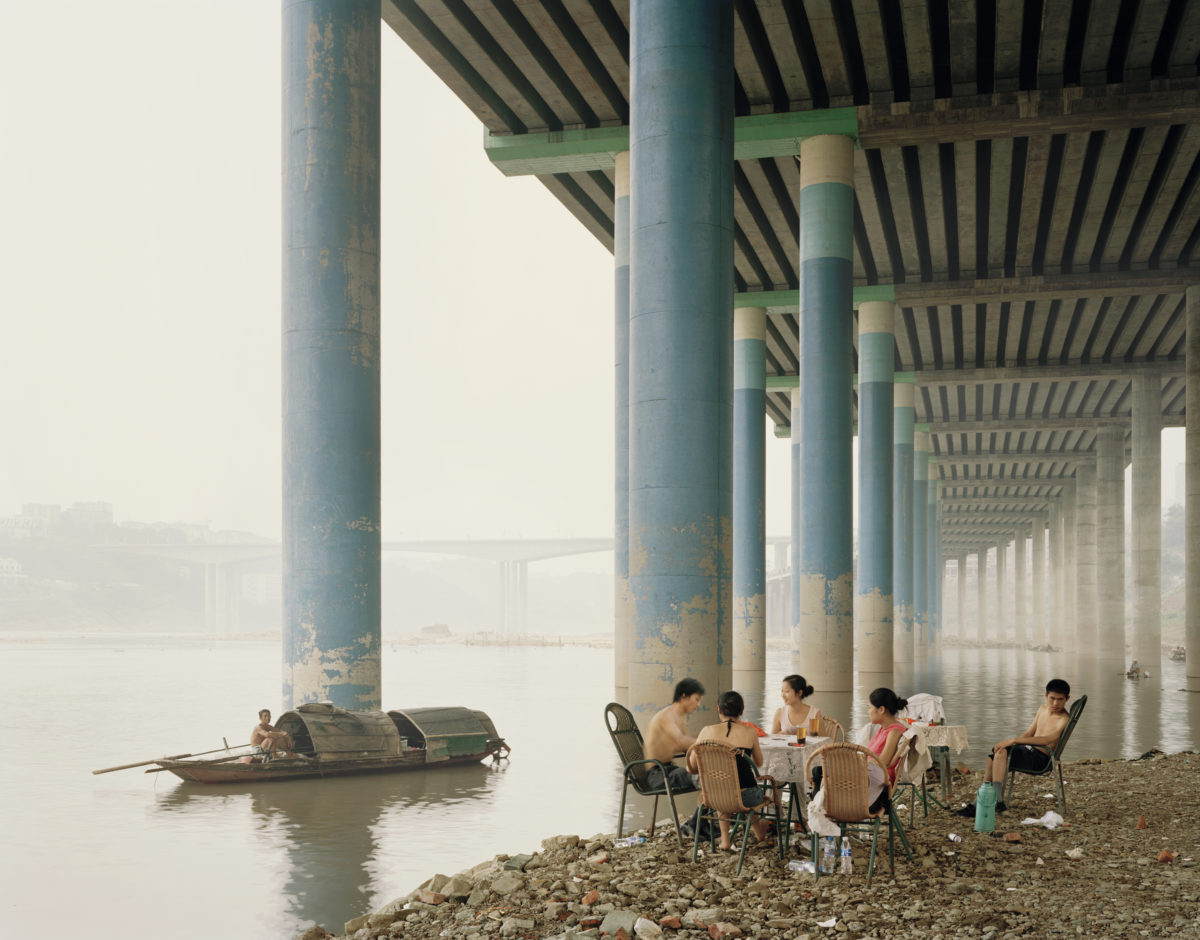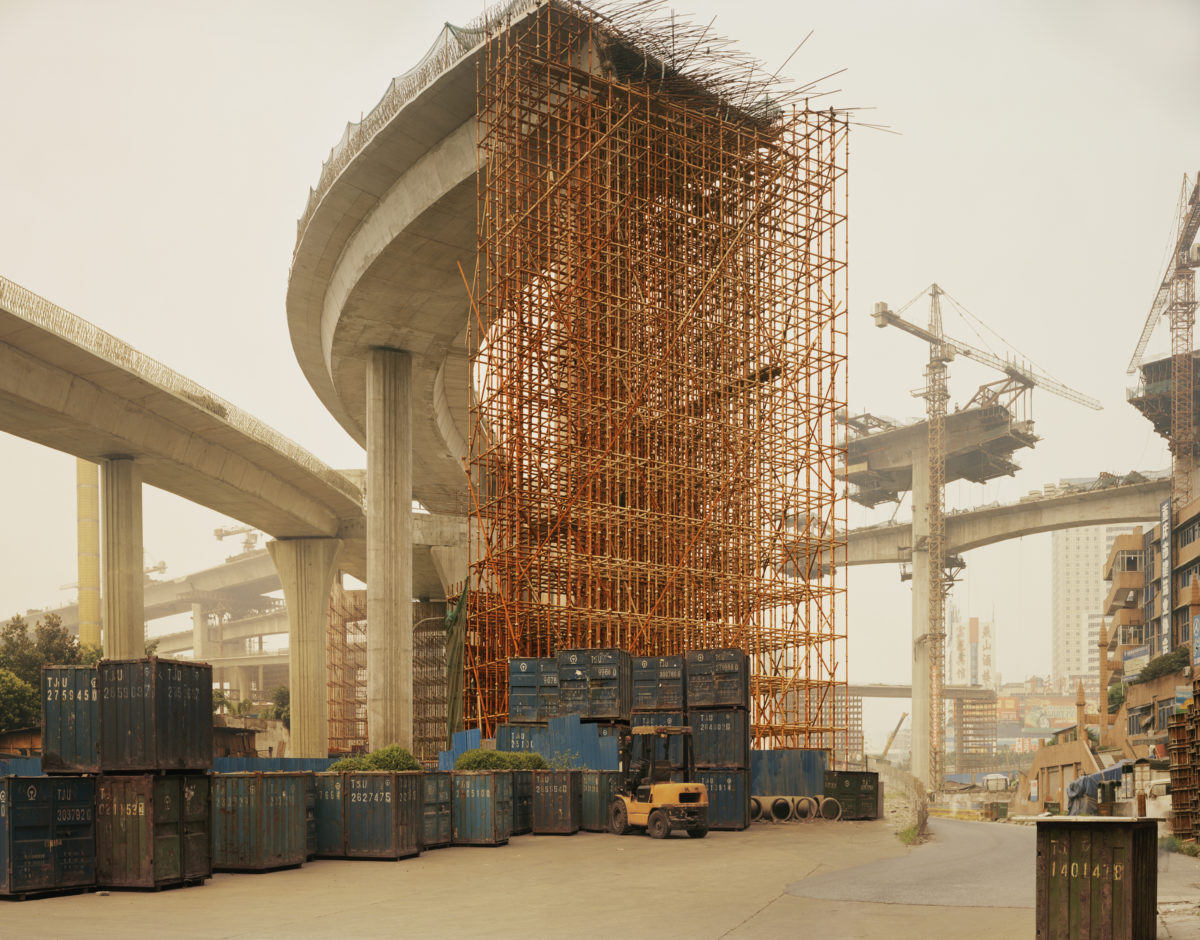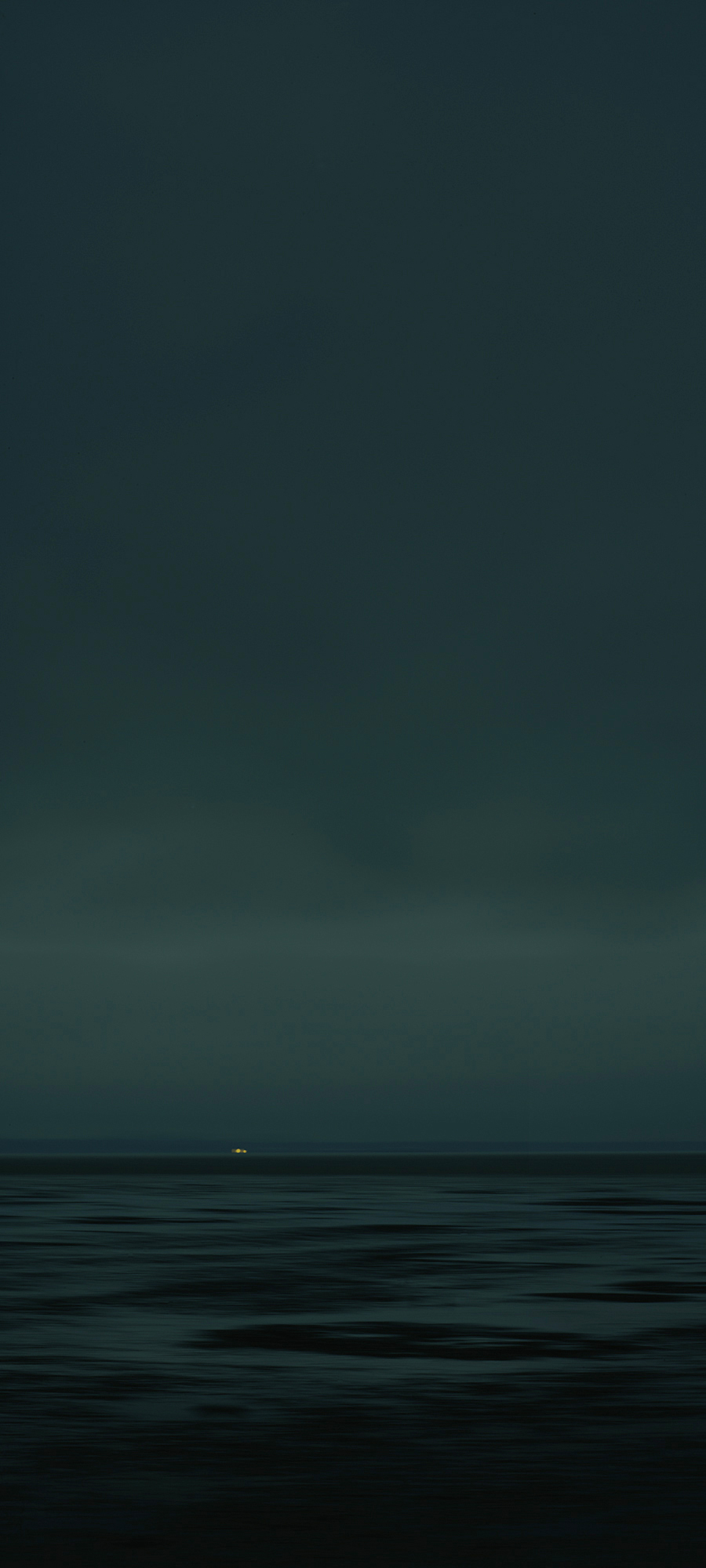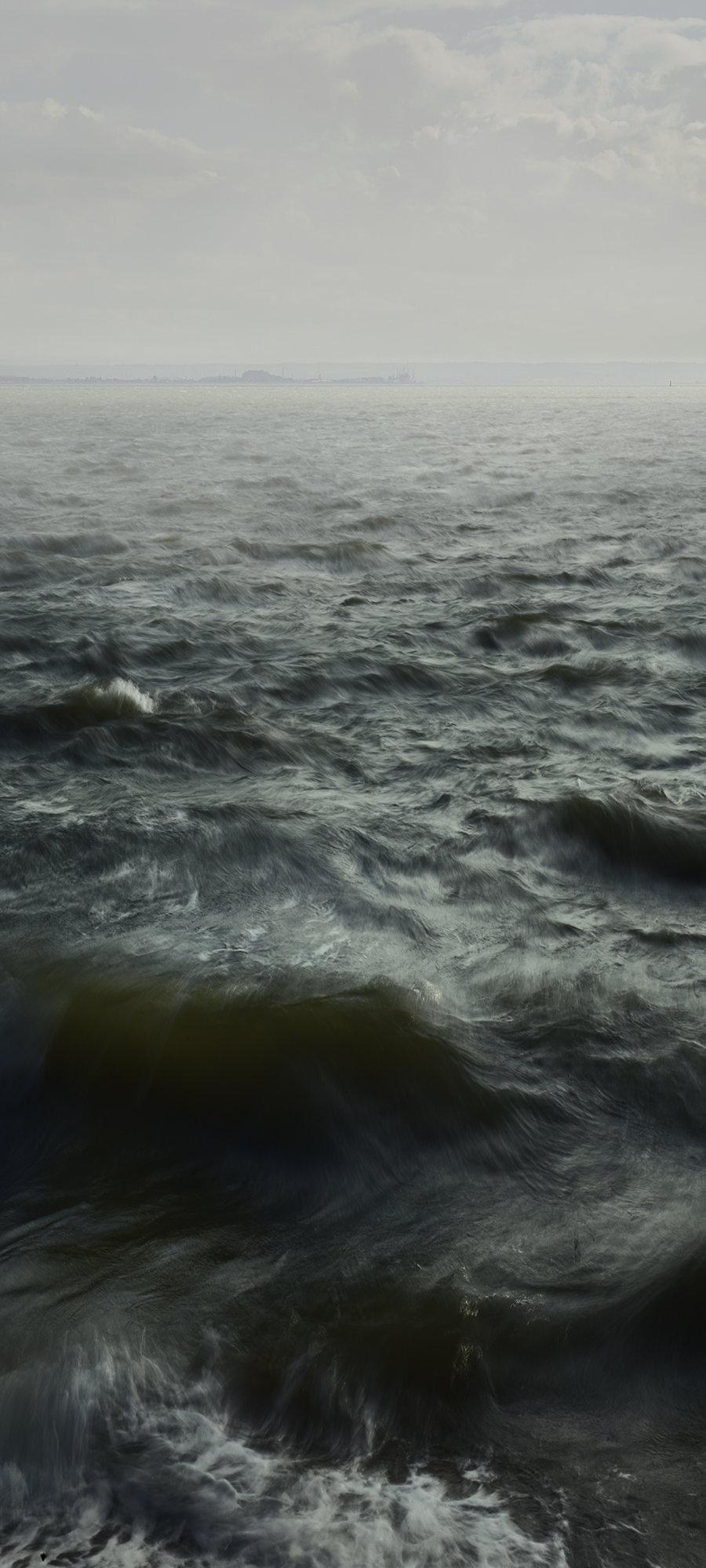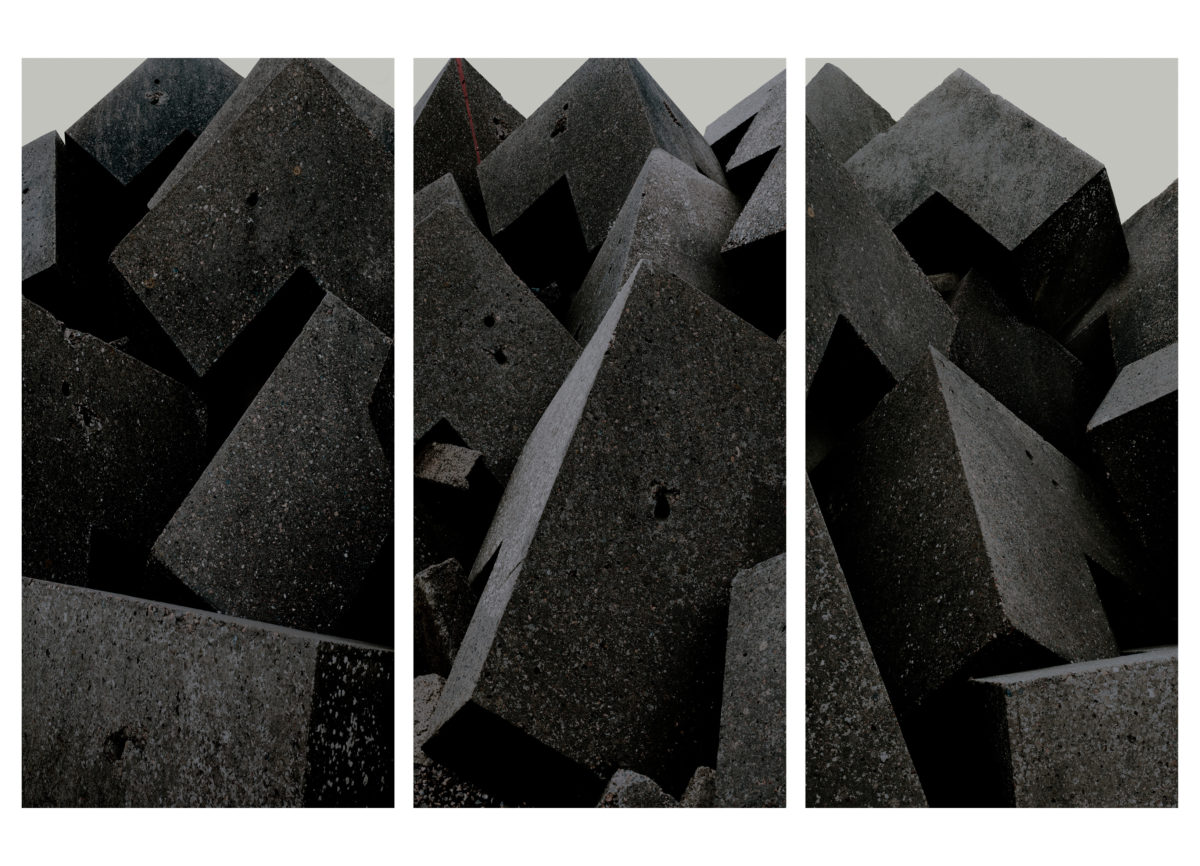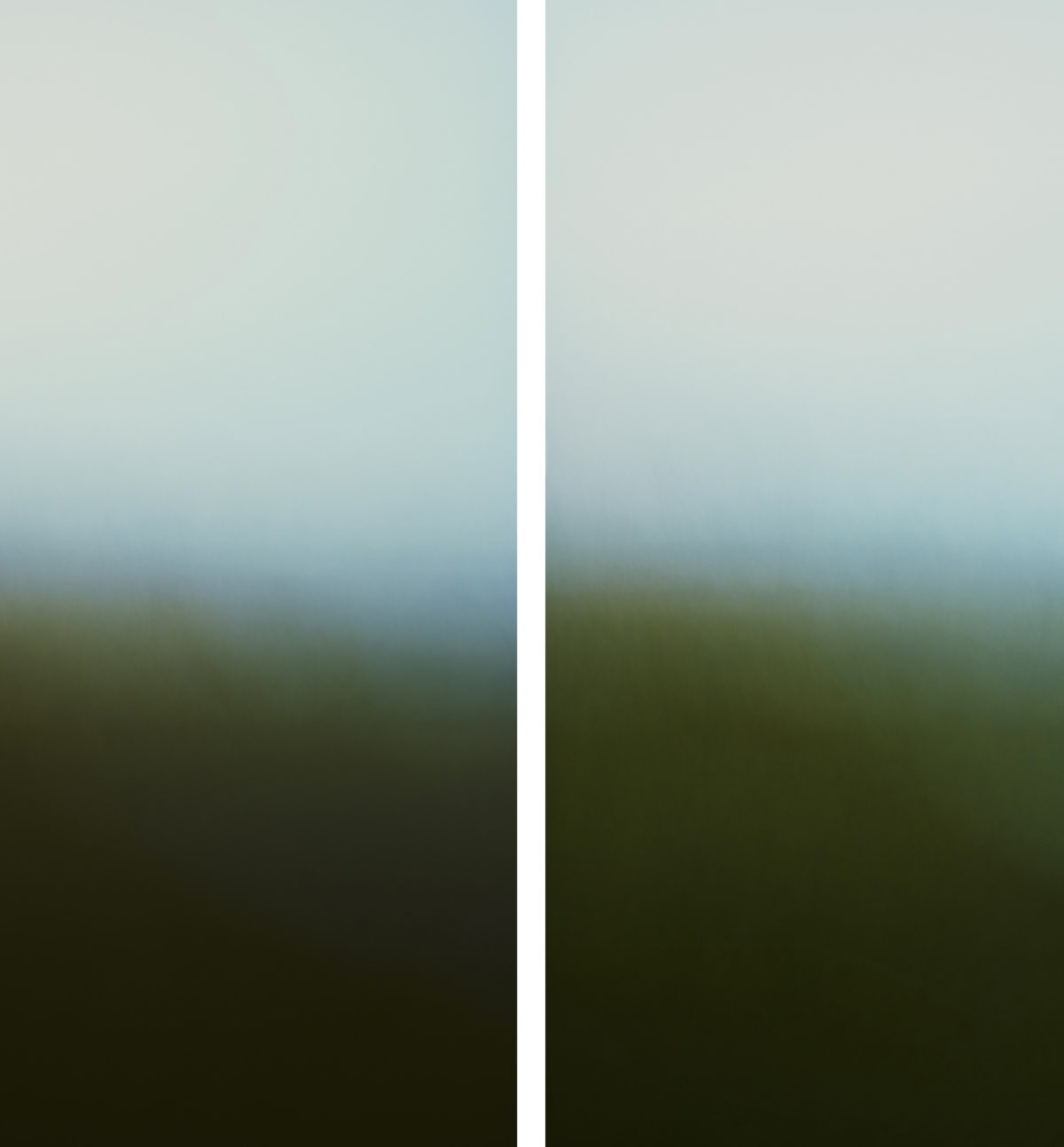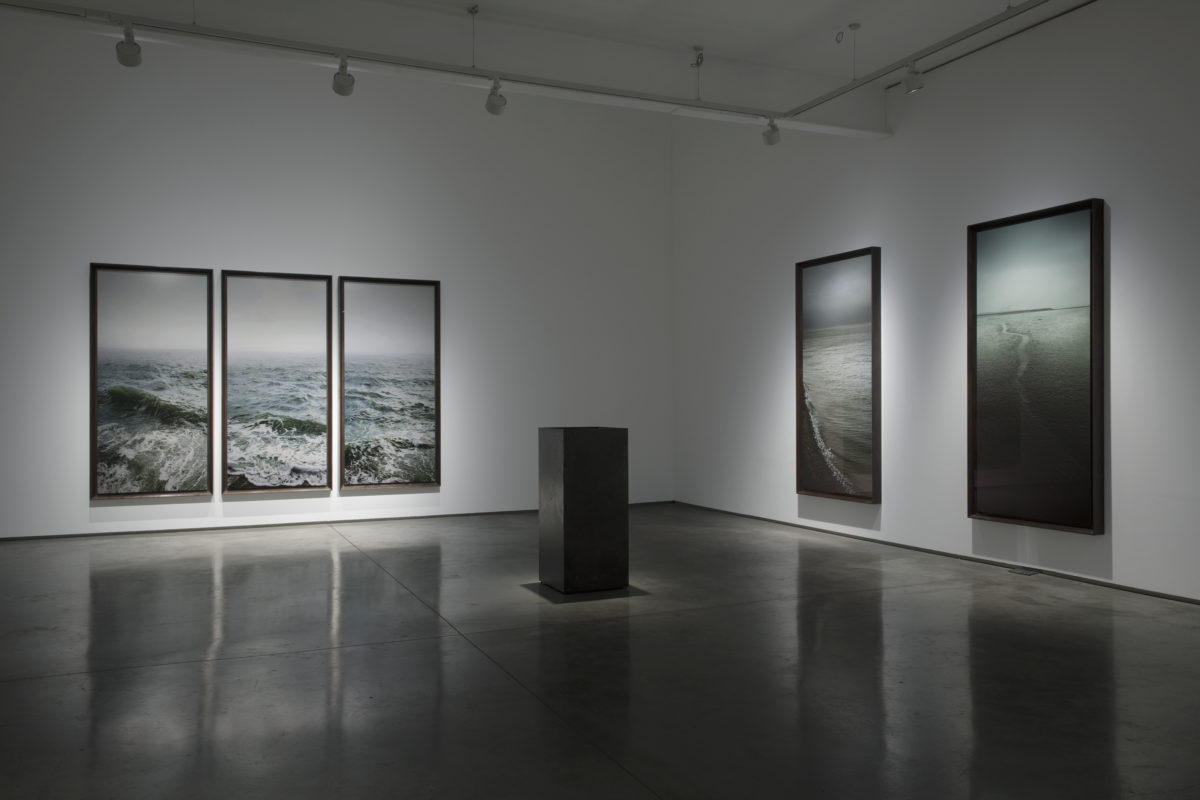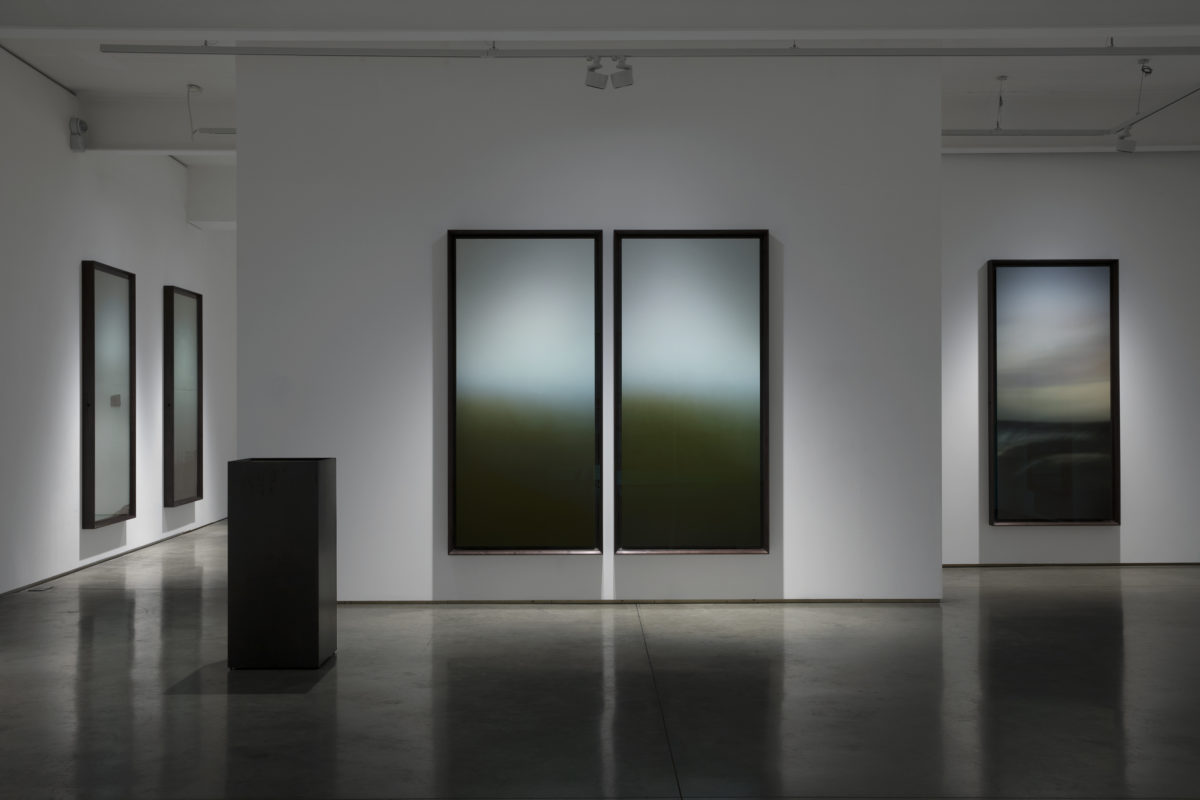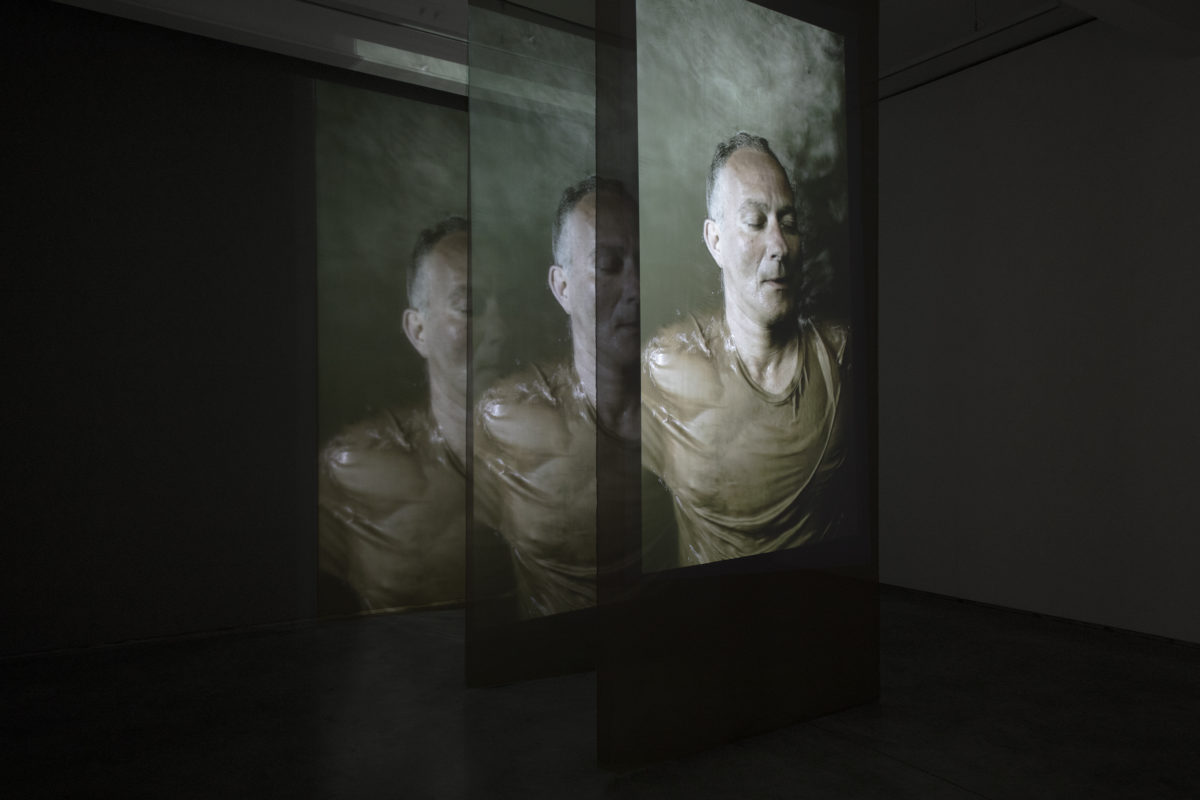Nadav Kander discusses his latest series 'Dark Line - The Thames Estuary' showing at Flowers Gallery, London, December 2017.
PW: Congratulations on your latest exhibition Dark Line – The Thames Estuary showing at Flowers Gallery. Could you describe the project for anyone who hasn’t seen it yet?
NK: Dark Line follows the Thames Estuary, the part of the river where it widens and slows down, where the river reaches the end of its journey and enters the North Sea. I’m very interested in the idea of journey and destiny, which works perfectly with the notion of the river widening, slowing and ultimately ending – and yet is the end really the beginning? To use T.S. Elliot’s quote, ‘In my end is my beginning.’ Does the river end or does it begin? Does it get evaporated and rise up into cloud and rain again, and do the cycles of life just continue onward? Is it not as human beings we’ve become caught up in having a beginning and an end?

PW: How long has this series been in the making? Your process in previous project (Yangtze – The Long River) seem to be created out of a reflective process of walking and wondering. Do you see this new series as an extension of that work?
NK: Dark Line started in the Summer of 2015, where I made about eight or nine trips to the estuary, often for a day; arriving and leaving in the dark. Sometimes I’d be there for two or three days at a time. Yangtze, in comparison, was over two and a half years and I made about five trips to China, always for about two weeks.
In terms of similarities between the works, looking at them as a reflective process of walking and wondering as you put it, they’re very much similar processes, but also quite different in other ways. When I went to Yangtze, I was imagining it to be far more naturalistic, for it to be more like the scroll paintings I’d seen as a child in museums. Part of my thinking was around the notion of Shan Shui scrolls; in how they link heaven and earth and this idea that we destructive beings are on earth for a very short period of time, compared to the rivers and mountains which remain. Du Fu in 735 AD wrote ‘State is shattered, rivers and mountains remain’, which was something that really caught my attention.



But when I arrived at Yangtze, it was so different to that. It was a very industrial landscape and the pictures I thought I’d be taking looked very different in reality. I was also very mindful of how it’s felt to be in China at a time of unbelievable change and at an unnatural pace in my view. So from the point of view of walking and wondering, yes they were very similar. I do feel I’ve addressed the estuary from a more grown up perspective where I’m trying not to stick to the common perceptions of photography, being this very focused lens on what is six or 20, or 300 metres in front of us. The work has become more of a thoughtful process showcasing an interior landscape.
PW: Could you speak a little about the process of making this work?
NK: It’s in my studio that the most decisive moment of this process takes place. You can’t make a great print without a good photograph but I must say that for me it’s not in the picture taking. There’s a lot of layering of colour and weight, and the editing and printing process is what takes these prints a further distance than the photograph itself.

PW: So does that process take longer, would you say than the image taking?
NK: Much longer, I take the time to revisit and revisit the prints. I keep on looking at the works, seeing how they strike me when I see them again after some time. During the shooting I found myself, like I said, always arriving at the river very, very early in the morning, which meant I never travelled in the light. I would always arrive there with the night rising and comparatively, I’d also find myself going into my studio at the same kind of time: three, four in the morning just to work for three, four hours before the light was up; whilst it was really quiet. It seems to work for me that way, I never worked on them at night; always really, really early in the morning. I spent much longer in the printing process than the shooting but equal to the time spent editing. Not that there’s anything taken out or put in, there’s no real jiggery-pokery. It’s much more about weight, what you see and what gets covered up.
PW: The fascinating thing about this series is how unrecognisable the Thames is. It feels moodier and slower than in reality. Did this come about through the process? Or was it always your intention to show it this way?
NK: I think the reason you don’t recognise the estuary is that the series became about the wondering experience. I’m most interested in my view of how I feel about the world around me and what slow moving, dark water means to me. I don’t necessarily feel like that every time I’m there photographing but it’s how I feel about it more generally.

PW: You’ve mentioned your relationship to dark water and how that makes you feel. Could elaborate a little on that?
NK: I have memories from when I was very young of having a pair of goggles by the seaside in South Africa and going into the water. To my delight, when I looked at the sand and the seaweed facing the beach, back towards my parents, it was just fantastic but when I turned away and looked towards the deep end, I saw the sand sort of falling away and coming into darkness. I was so petrified that I ran screaming from the water. I had dreams about that until I was well into my thirties and I think there’s a lot of fear of the unknown, or the wonderment of the unknown more widely. You see this very much in my body series of the people turned mostly from behind, painted white but looking into blackness. It’s very much the same feeling for me. That’s my experience of it, but you often hear of people having a beautiful melancholy near slow moving water. You hear of people feeling a great sense of destiny or even voyage of where it might take them. This melancholy brought on by the slow movement of liquid seems to be a universal human condition.

PW: The show at Flowers Gallery felt reminiscent of the initial wondering experience, and subsequently shows itself throughout the whole process. Can you talk about the installation of the exhibition and your ideas behind it?
NK: I think all those elements all connected. I could never have made these pictures somewhere else. The estuary has an unbelievable history since Roman times, of toil, death, love, ecstasy, of rigour that has happened on that river that means a lot to me. So when I walked along and picked up things that have such a human connection with the river, whether it’s old bricks or pieces of glass; they’re quite poignant to me. They mean a lot because I’m interested in the reaction human beings feel to water. I’m not interested in how clean or deep it is, or where it’s come from, it’s all about the reaction that human beings have to this water. And I don’t think my reaction would be remotely as strong, had it not been for the remarkable history it’s had from trade. It’s connected to so many things from the amount of different nations that have sailed into the Thames to trade with England, to the Dutch settling at Canvey Island, to the Chinese, Japanese, Indians and French that have made England the democratic and accepting nation that we are. That’s why there’s been such a varied settlement in the South of England that’s now being turned on its head with the introduction of Brexit. It’s also poignant from that point of view.

PW: We see the inclusion of containers holding water and objects from the river as well as a film where you’re submerged in the Thames itself. Can you talk a little about these inclusions and what you hoped to achieve?
NK: When I collect man-made objects and put them into blackened water where you see it disappearing into the depths, that experience gives you a certain feeling, whether you’re conscious of it or not. Looking in those tanks, that feelings reinforced in the prints and again in the film. The film clearly is about cycles; water comes over me and retreats, and comes over me and retreats, four times. It’s one take and it’s looped, but the take is 19 minutes and it’s slightly slowed down. When I’m underwater, I’m holding my breath for a minute and a half although to watch it, seems more like two minutes. Within these cycles, I come and I go under and I come back, going through all these different emotions, but I don’t die and I don’t go away.


PW: Did that experience of being underwater and holding your breath take you back to your childhood memory, or was it different to that?
NK: No, that childhood experience was much more about looking into the unknown, looking into darkness. There was nothing unknown about this situation. It was specifically difficult. I’ve got nose plugs in which allowed me to make the performance but I got a hell of an ear infection for a couple of weeks after it. It really was a performance; I didn’t feel anything particularly except a typical reaction to cold water and holding your breath for a long time. But I’d had enough when we’d done it for twelve or thirteen minutes.

PW: Finally, what’s next for you?
NK: I’m planning to continue with this work. I feel it’s very much midterm, I don’t know if it’s even halfway but I really feel like I want to continue with it. I think the exhibition happened because we had enough good work to show but I’m certainly not finished and I don’t want to fall into the trap of reinvention that people feel they
have to do all the time. It’s another constraint and preconception about photography that says you make these series that last a year and then you just move on. You would never expect that of a painter. Modigliani, who’s on at the Tate at the moment, only lived to 35 years old and his work changes quite a lot during that time. He painted for just 15 of those years, so I don’t think I have to move on just yet.
Nadav Kander’s work Dark Line – The Thames Estuary is on display at Flowers Gallery, London until January 13th 2018.
For more about Nadav’s work, click here.
For more from our Ideas Series, click here.
